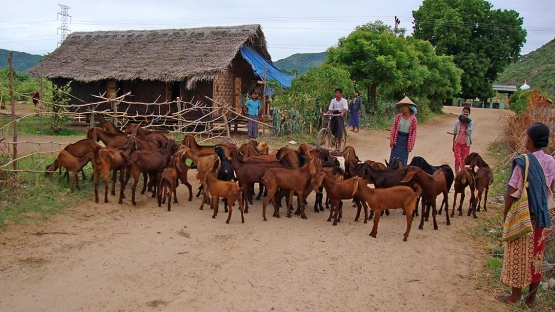Animal diseases cause great damage in countries, especially where the majority of people depend on agriculture and livestock to live. After attending a two-week course organized this month by the IAEA, in partnership with the Food and Agriculture Organization of the United Nations (FAO), several scientists from sub-Saharan Africa and Asia are now in the position to diagnose such diseases.
“The farmer is the one who will benefit,” said Christopher Simuntala, Head of the Central Veterinary Research Institute in Lusaka, Zambia, who participated in the course held at IAEA Laboratories in Seibersdorf, Austria. “The more diseases we control, the more animals the farmers have. And if they have more animals, poverty is reduced.”
According to the FAO, one billion poor people, mostly pastoralists in South Asia and sub-Saharan Africa, depend on livestock for food and livelihood. Many animal diseases are highly contagious and can spread extremely quickly, hindering trade and, in some cases, affecting public health.
“Molecular diagnosis will help us understand the spread of diseases,” added Simuntala. “We will be able to tell whether a disease originated in our area, or started elsewhere and then moved to our country. This will help us in predicting threats and controlling disease.”
The 17 participants learned how to identify and collect the right samples, analyse the data, interpret the results and submit them to public databases to be shared both domestically and internationally. According to Sabenzia Nabalayo Wekesa, Head of the Molecular Laboratory of the Central Vet Laboratories in Nairobi, Kenya, sharing the data is an important element of the entire process. It allows for close collaboration with other countries and helps to compare results, learn what diseases are circulating elsewhere, and prevent them from spreading.
The nuclear-derived technique taught is called sequencing, and involves finding the way the nucleic acid (RNA and DNA) information inside pathogens is gathered. Organisms, including viruses, have genetic material. Through genetic sequencing, scientists can find out how the information inside the genetic material is structured and how it behaves. This not only helps to diagnose a disease, but can also disclose its origin and evolution. Hear how course participants and IAEA specialists explain the technique and its benefits.
“Nowadays veterinary laboratories in many countries use advanced molecular diagnostic technologies,” said Pont Pont Mon, Research Officer at the Veterinary Diagnostic Laboratory of the Myanmar Ministry of Livestock Breeding and Fisheries, adding that she will train her peers back in Myanmar on the skills acquired.
“Current conventional methods used in many developing countries can detect the virus, but not determine its behaviour or character,” said Charles Euloge Lamien, specialist in animal health at the Joint FAO/IAEA Division of Nuclear Techniques in Food and Agriculture. “And viruses change. With the use of full genetic sequencing, the detection method is more refined and sophisticated.”
Radioactive labelling was the method used for the first molecular characterization of a virus genome, and it is still the preferred technique where high levels of sensitivity and specificity are needed, and where a single pathogen among a million similar micro-organisms has to be identified. However, in most cases, a simpler method, involving a less sensitive labelling approach using dyes, chromophores or mass spectroscopy is sufficient to identify the pathogen threat.
“The precise data gathered will influence policymakers to shape more efficient national and regional strategies to control and manage the main transboundary animal and zoonotic diseases in each country,” Lamien said.
The nuclear-based technologies can be used to detect the capripox disease virus cluster, the peste des petits ruminants (PPR) virus, the African swine fever virus, the foot and mouth disease virus, the Newcastle disease virus, and the highly pathogenic avian influenza viruses as a single pathogen or as a multi pathogen detection system. All these have a considerable negative impact on agriculture and trade and consequently on farmers’ livelihoods.
The IAEA training course was developed for veterinary diagnostic laboratory scientists from sub-Saharan Africa and Asia that are members of the VETLAB Network of veterinary laboratories, supported by the IAEA Peaceful Uses Initiative and the African Renaissance Fund.







